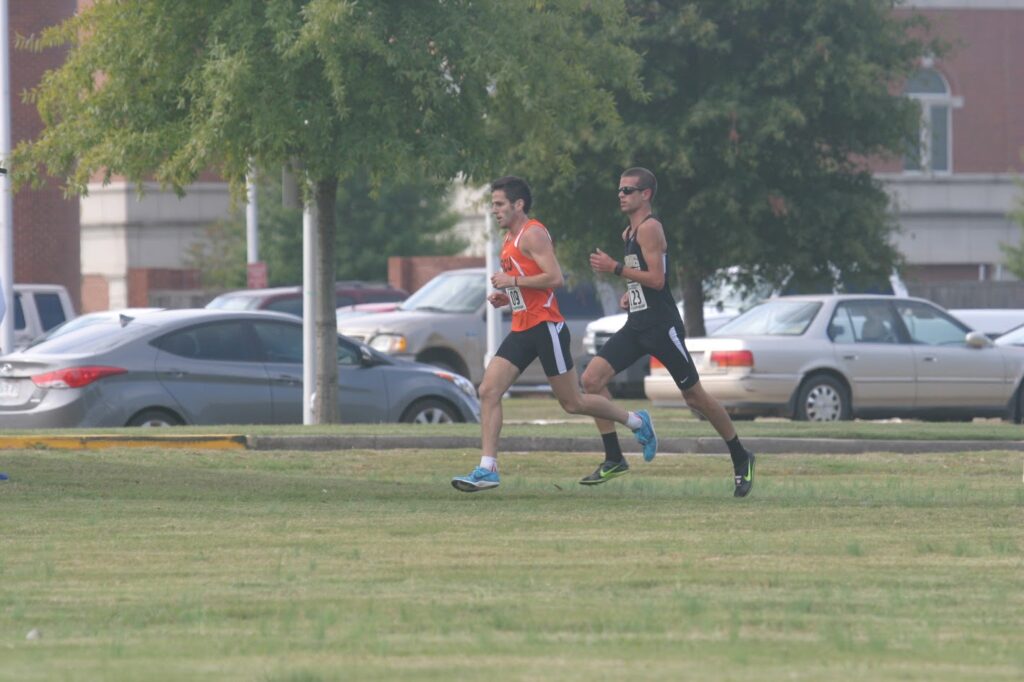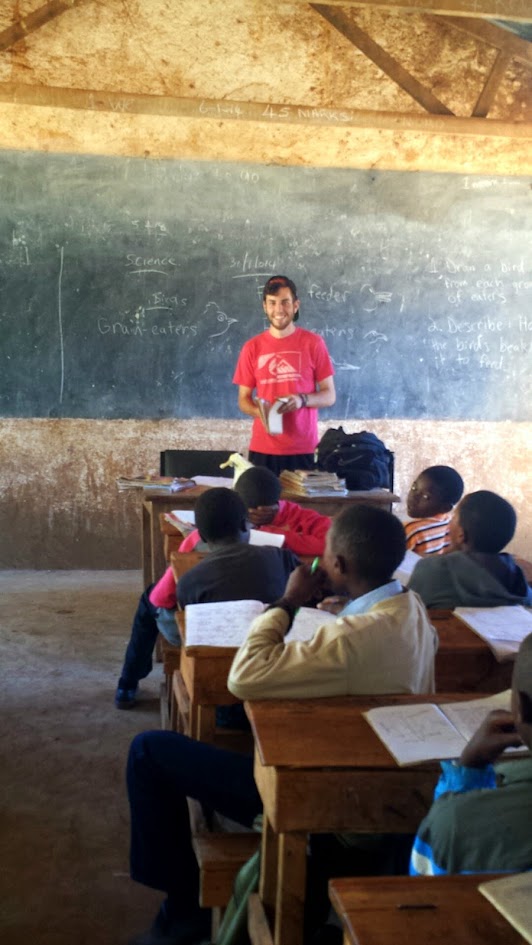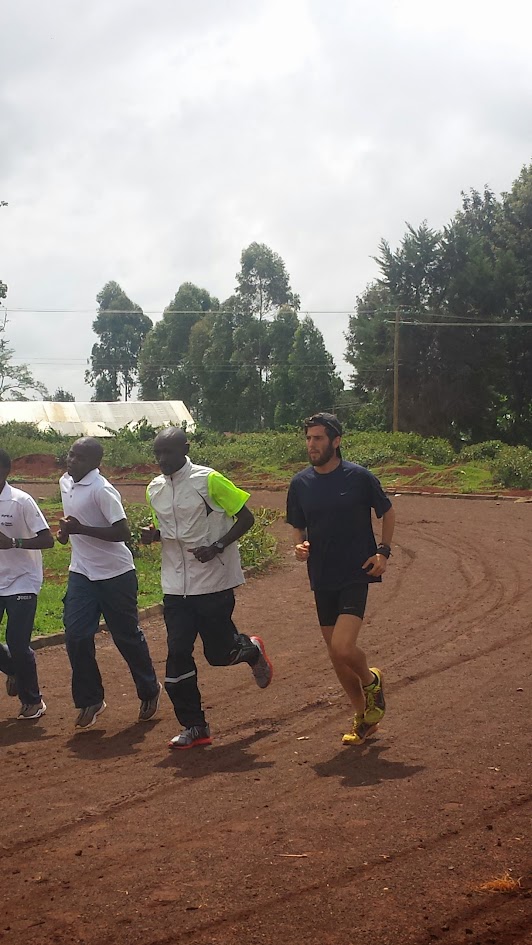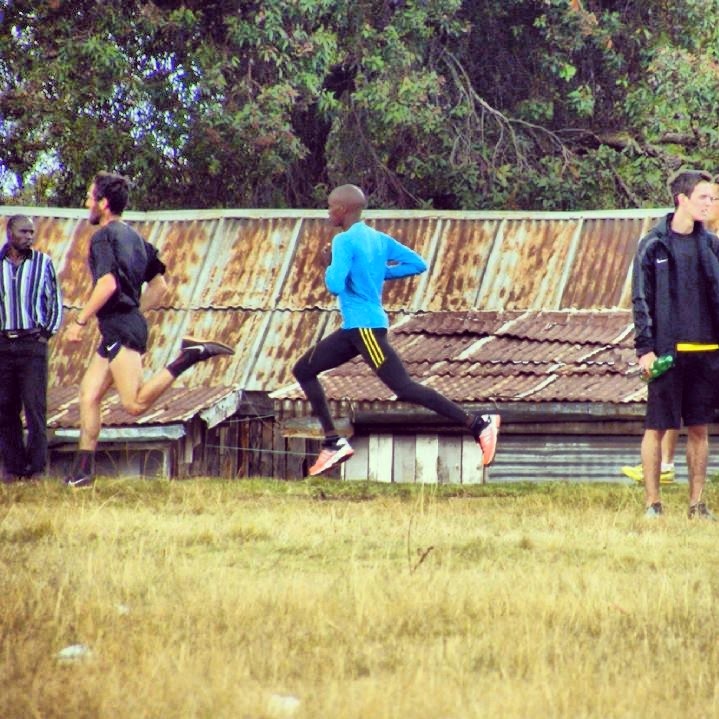In the fall of 2013 I started Grad School at East Central University, in Ada, OK; Go Tigers. I wasn’t that into it.
It was also, technically, my third year competing in cross country and track for ECU. I had a great year. I ran 25 minutes flat for 5 miles at the conference XC championship and lost to a big kick from Harding’s Andrew Evans. Epic race. We battled back and forth the ENTIRE time.
Table of Contents

After the season, I knew I wanted to mix things up. I didn’t want to continue grad school, I wasn’t ready to get a real job, so I bought a one way ticket to Nairobi, Kenya, in the Horn of East Africa.
I had several Kenyan teammates at Oklahoma Panhandle State University and ECU. Some of the best people I ever met. They all said the same thing. “You should go to Kenya!”, or “You can stay with my family!” They would say things like this all the time and paint this picture of a place that was insanely welcoming and inviting. They were all correct. That’s exactly what my experience was. Everyone in the country was wildly kind to me.
So one of my buddies had a brother, who knew of this little school in the middle of nowhere who always needed a lot of help. Foreigners before had done stints helping out there, so they had an open arrangement, that if you came and taught, they’d house you in a local orphanage, and they would feed you. Worked for me.

Kamangu Primary School. I spent the first half of 2014 there and it was great. Almost a 2 mile walk on dirt roads and trails to get to school. Everyday I would run either before or after school; usually before, as the sun was coming up. It was really nice BUT I really wanted to run and train with more people! I was in a very remote area and only saw people running a handful of times. So eventually I said my goodbyes and took a very long Matatu (bus) ride north, to Iten, where all the good runners are.
I have a million stories about my time in Iten. One time I was at dinner and at the table next to me was Mo Farah, Alberto Salazar, and Colm O’Connell. When I started walking home after my meal, Colm stopped and picked me up and drove me home.
It was common to see a large number of olympians at the track on Tuesdays. It was completely normal to see Eliud Kipchoge, Asbel Kiprop, Mo Farah, David Rudisha, and a bunch of others absolutely ripping around a dirt track up at 8000ft of elevation.. Some of the best runners I came across no one had even heard of yet, they were just waiting for their opportunity.
Anyways, I got to run a lot up in Iten. It was awesome to observe, because East Africans aren’t just really good at running, they’re also really really smart when it comes to training. They do almost every facet of training better than we do, but one of the things I found the most interesting was how they ran EASY. What’s often known as the Kenyan Shuffle.
Kenyan Shuffle
We’d often meet super early to run, a touch before the sun had brought any light. It was incredibly common for the locals to be wearing a full kit; running jacket and pants/tights, even if it wasn’t cold. Always felt like a sign of professionalism that they brought to their training. Some folks arrive at the office in a suit and tie. These cats are in Nike and Adidas full tracksuits. We usually ran for time or on a predetermined loop, so mileage and pacing did not matter one bit.
Just like everybody else, Kenyans love to do intervals on Tuesdays, and long runs on the weekend, but for the easy days in between, they have a distinct way of executing these runs. Often known as the Kenyan Shuffle, on easy days, even the best runners in the world weren’t scared to run very, very slow.

The crown jewel defining factor of the Kenyan Shuffle is the super slow start. We’d start these runs so easy, it felt like it was just a hair above a walk. It was early, and we were letting our bodies wake up slowly. This SLOW trot was never in one ounce of a hurry to get faster. It would just be as easy as you could run. Now often these runs were for a good chunk of time 50-90 minutes. Over this long time period, due to some sort of Voodoo magic the pace would increase. But what was different from these runs to others is, we NEVER ran any harder. The pace increase was always slow and natural. It was like watching a clock, obviously the hands are moving, but it’s tough to pinpoint when exactly it happened. There were many times, as we got back to the start, I would notice we were moving pretty quickly, but I hadn’t ever increased my effort level from the beginning.
They were magicians at letting the body naturally warmup. Fitness would take over at some point and the pace would get to what it needed to be. Some days it would only pick up a little, some days a lot, but it was never forced, and the effort didn’t change too much.
It was incredible how rejuvenating these runs felt. It gave me a lot of confidence that I could run farther more often, and these runs also had me feeling ready for my next harder workout.
So maybe on your next easy run see just how easy you can start the run. See if you can do a whole run at the same, very low, effort level, and then afterwards you can always check to see if the body is naturally warming up and increasing the pace without you having to try. Hopefully you’ll feel fresher for your next workout too.
What is the Kenyan Shuffle, and when might runners need to utilize this type of training?
The Kenyan Shuffle is a super slow and relaxed jog, something East African runners—especially Kenyans—are known for. The main thing about it is just how ridiculously easy the start is, almost like you’re barely running. When I was in Kenya, we’d walk a little to where we were gonna start the run, and honestly, that walk kinda felt like part of the run itself. It’s all about easing into the effort instead of forcing anything right off the bat.
What makes the Kenyan Shuffle the Kenyan Shuffle is how easy and chill it is from the jump. It’s not what most people think of when they think of running—hard, fast, grinding—it’s the exact opposite. It’s giving your body time to warm up, settle in, and move in a way that feels natural. As the run goes on, things loosen up, heart rate goes up a little, body temperature rises, and before you know it, the pace kinda just takes care of itself. But the effort never really changes. It’s not about forcing a faster pace; it’s about letting your body decide when it’s ready to move a little quicker.
A funny thing about the Kenyan runners is they often wear full kits—tights, jackets, the whole deal—even when it’s not cold. And I think that kinda ties into the whole idea. You’re not starting out trying to hammer; you’re easing in, warming up gradually, and letting things build naturally. From a training standpoint, we know that aerobic development just takes time, and that’s what this style of running is all about. It’s not about smashing workouts; it’s about spending time on your feet at an easy effort and letting the fitness build over time.
So when should runners use the Kenyan Shuffle?
Honestly, anytime they’re running easy. One thing I tell my athletes all the time is to let the first mile be the slowest. That’s basically the essence of the Kenyan Shuffle. If you’re running easy, make it easy. It’s letting easy running actually be comfortable and relaxed.
It’s perfect for easy days, warm-ups before workouts (so you don’t waste energy before the main session), in between hard intervals (since light jogging actually clears lactate out of the muscles better than walking), and for cool-downs after a tough session to bring the heart rate down gradually.
The Kenyan Shuffle is also perfect for workouts. A slow warm-up before intervals or tempo efforts ensures that nothing is wasted before the hard work starts. If you’re doing a workout with fast reps, jogging lightly between those reps instead of walking helps keep the legs engaged and actually clears lactate faster than walking, which means you’ll feel better heading into the next repeat. The lactic acid byproducts are what builds up in the muscles when we’re working really hard during workouts. Being able to clear it is a very important part of endurance running. Light jogging is the BEST way to do that.

And after a hard session, the Kenyan Shuffle is great for the cooldown—it keeps the blood flowing, gradually lowers the heart rate, and helps kickstart recovery without adding unnecessary strain. Since you’re already warmed up and your adrenaline is really high, some easy Kenyan Shuffle miles at the end are a great way to add some aerobic volume and fitness.
Perhaps the best time to use the Kenyan Shuffle is on the days you just don’t feel like running but you really need to. Get out the door and jog as slow as you can. Just get moving, no pressure, no paces. See if things start to feel better in 10, 20, or 30 minutes of really easy jogging.
When might the Kenyan Shuffle not work, and what type of training should be used instead?
Now, there are times when the Kenyan Shuffle doesn’t really fit. One big example is marathon-specific workouts. When you race a marathon, you don’t get a long, slow buildup—you kinda just gotta get going at race pace. So for workouts that simulate race day, sometimes you need to start a little quicker to prep the body for what’s coming.
Another time the Kenyan Shuffle might not work is when you’re pressed for time. Sometimes you don’t have the luxury of jogging around for a few miles before getting into the real work. In those cases, a short structured warm-up with some strides might be a better call.
That said, the idea behind the Kenyan Shuffle—starting easy, listening to your body, and progressing naturally—is something runners can use in a ton of different situations. It’s a super underrated way to get in more mileage, stay healthy, and feel fresher for your harder efforts. It’s not just about running slow—it’s about running smart.














